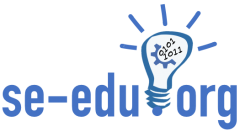Flipped classroom was a hot topic during the SECM workshop. It started with a paper by Nicolas Paez on A Flipped Classroom Experience Teaching Software Engineering, and continued with many exciting discussions throughout the day.
In parallel to the workshop, Hakan and I presented a paper at ICSE’17 on Flipping a Graduate-Level Software Engineering Foundations Course based on our experience co-designing and co-teaching the course over several semesters. In this blog, I would like to distill some of the tips from the paper, so others have the opportunity to discuss related experiences.
But before we start, let me share my suprise when I noticed that our ICSE paper on flipped classroom was part of a session called “Online learning”. Online learning?
Yes, true, in flipped classroom students have to watch videos “online” before coming to class. But the parallel with online education stops here. In fact, flipped classroom is the antithesis of online learning, in the sense that most of the learning happens within the classroom, where students come physically to perform in-class activities under the guidance of a faculty.
Most of the value of flipped classroom comes from immediate feedback that students receive when trying to solve a problem right in front of a faculty. Immediate feedback enables rapid and effective learning. It is specially important in fields like software engineering, where nothing is black or white, everything has nuances, and there are exceptions to pretty much every rule. In such a context, forget about having “robots” answering students’ questions online! And who wants to wait 24 hours for a human being to get back to a question posted online? The most effective way (that I know of) of creating short feedback loops and generating rapid and effective learning is with face-to-face interactions between students and faculty. This is what flipped classrooms are all about!
